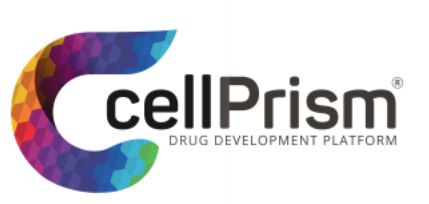- Your cart is empty
- Continue Shopping
Preclinical models of nicotinamide phosphoribosyltransferase inhibitor-mediated hematotoxicity and mitigation by co-treatment with nicotinic acid
- Home
- Publication
- Preclinical models of nicotinamide phosphoribosyltransferase inhibitor-mediated hematotoxicity and mitigation by co-treatment with nicotinic acid

Preclinical models of nicotinamide phosphoribosyltransferase inhibitor-mediated hematotoxicity and mitigation by co-treatment with nicotinic acid
- elsbizadmin404
- Publication
- Reading Time: < 1 minute
[vc_row][vc_column][vc_column_text]
Abstract
Nicotinamide adenine dinucleotide (NAD) is an essential co-factor in glycolysis and is a key molecule involved in maintaining cellular energy metabolism. Nicotinamide phosphoribosyltransferase (NAMPT) catalyzes the rate-limiting step of an important salvage pathway in which nicotinamide is recycled into NAD. NAMPT is up-regulated in many types of cancer and NAMPT inhibitors (NAMPTi) have potential therapeutic benefit in cancer by impairing tumor metabolism. Clinical trials with NAMPTi APO-866 and GMX-1778, however, failed to reach projected efficacious exposures due to dose-limiting thrombocytopenia. We evaluated preclinical models for thrombocytopenia that could be used in candidate drug selection and risk mitigation strategies for NAMPTi-related toxicity. Rats treated with a suite of structurally diverse and potent NAMPTi at maximum tolerated doses had decreased reticulocyte and lymphocyte counts, but no thrombocytopenia. We therefore evaluated and qualified a human colony forming unit-megakaryocyte (CFU-MK) as in vitro predictive model of NAMPTi-induced MK toxicity and thrombocytopenia. We further demonstrate that the MK toxicity is on-target based on the evidence that nicotinic acid (NA), which is converted to NAD via a NAMPT-independent pathway, can mitigate NAMPTi toxicity to human CFU-MK in vitro and was also protective for the hematotoxicity in rats in vivo. Finally, assessment of CFU-MK and human platelet bioenergetics and function show that NAMPTi was toxic to MK and not platelets, which is consistent with the clinically observed time-course of thrombocytopenia.
[/vc_column_text][vc_column_text]
Learn more:
In this study, the preclinical models for thrombocytopenia, were evaluated by ReachBio’s Thrombicytopenia services.
Learn more about ReachBio’s services
DOI:
10.3109/15376516.2015.1014080[/vc_column_text][/vc_column][/vc_row][vc_row][vc_column][vc_column_text css=”.vc_custom_1619753291832{margin-bottom: 0px !important;}”]
RELATED SERVICES
CellPrism® Drug development Platform
[/vc_column_text][vc_separator color=”custom” border_width=”2″ accent_color=”#004a80″][/vc_column][/vc_row]
CONTACT

QUESTIONS IN YOUR MIND?
Connect With Our Technical Specialist.

KNOW WHAT YOU WANT?
Request For A Quotation.
OTHER BLOGS YOU MIGHT LIKE
HOW CAN WE HELP YOU? Our specialists are to help you find the best product for your application. We will be happy to help you find the right product for the job.

TALK TO A SPECIALIST
Contact our Customer Care, Sales & Scientific Assistance

EMAIL US
Consult and asked questions about our products & services

DOCUMENTATION
Documentation of Technical & Safety Data Sheet, Guides and more...
